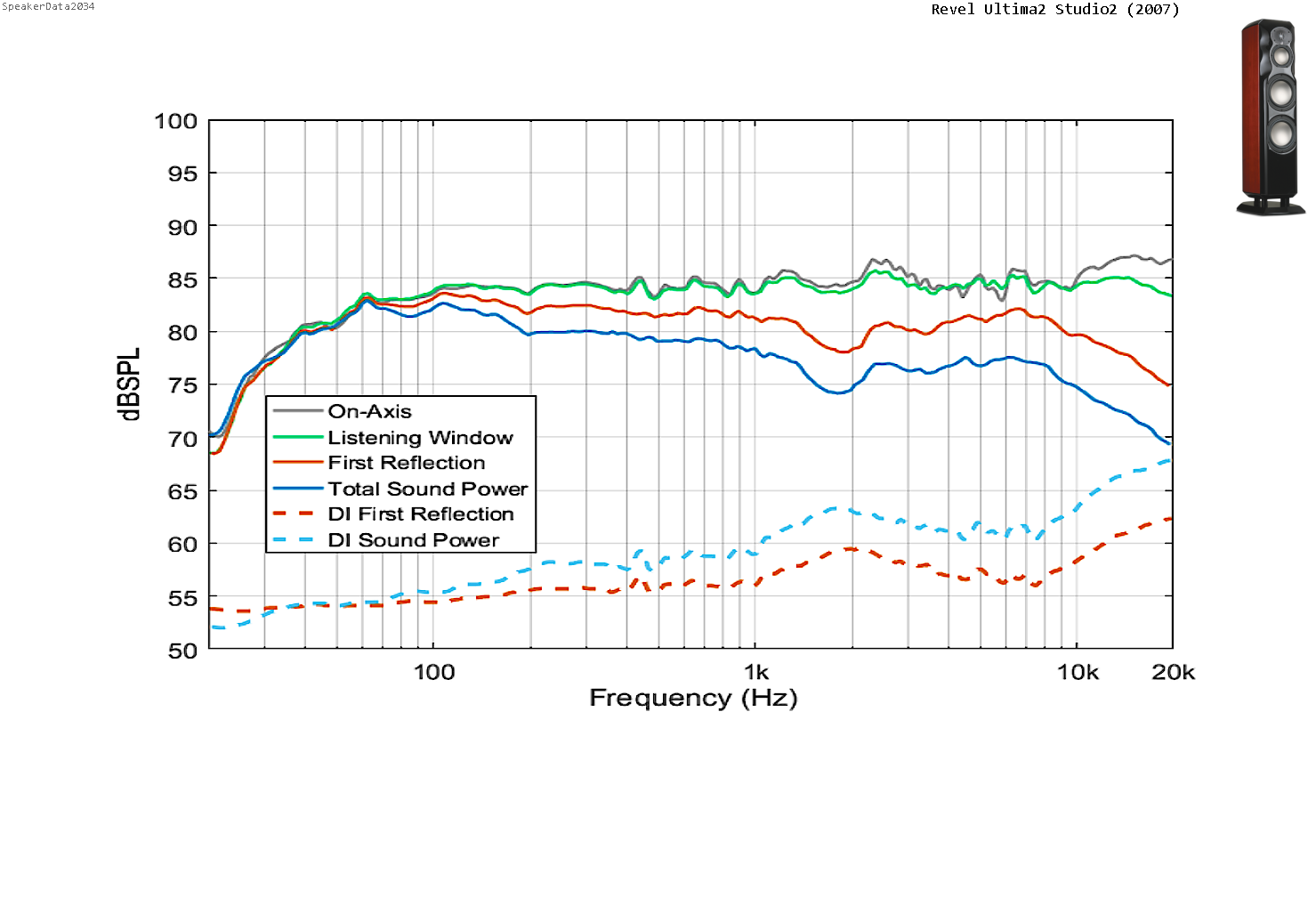The Olive formula seems far then perfect in this case, as this loudspeaker isn't either smooth on axis nor has smooth directivity, but only (like most of those designs) a clever chosen frequency on axis which compensates the directivity problems to some degree on the sound power / far field, but the psychoacoustically important direct sound above the transition frequency remains coloured.
I agree and disagree. I disagree in the sense that the smoothness is determined by the formula, therefore the speaker is smooth enough. Even if the on-axis is coloured, there's nothing to suggest the speaker wouldn't still be preferred as often as a speaker that achieved the same score but had smoother on-axis. Though academically, I would believe that to be the case.
I think there are some discontinuities that look bad to the eye but are not that bad in practice. The on-axis curve is probably the spekaer's weakest part, but the Predicted in room curve - which almost always looks just like the early reflections curve, is actually quite smooth.
Compare with, say, the Revel Ultima Studio2:

Obviously better on-axis, but the directivity isn't that much better.
But yes, I agree with you in the sense that it's worth noting the formula doesn't actually include smooth directivity as part of the calculation. The only variables are operations on the predicted in-room response, on-axis curve, and low frequency extension. Because both the predicted in room response and on-axis curve should be smooth, that generally implies smooth directivity. For the perfect speaker, these would both be perfectly smooth. But for anything less, the formula does not necessarily require it. The fomula also doesn't seem to account for tilt. So you can "cheat" the formula a bit
That's something the careful observer should watch for. A smooth directivity curve will tell you how much you can "correct" a speaker via EQ (Distortion and built-in EQ such notwithstanding).
As you note, in this case there appears some compensation for the directivity issues in the on-axis curve. That's a legitimate way of designing a decent speaker methinks, even if not the ideal.
